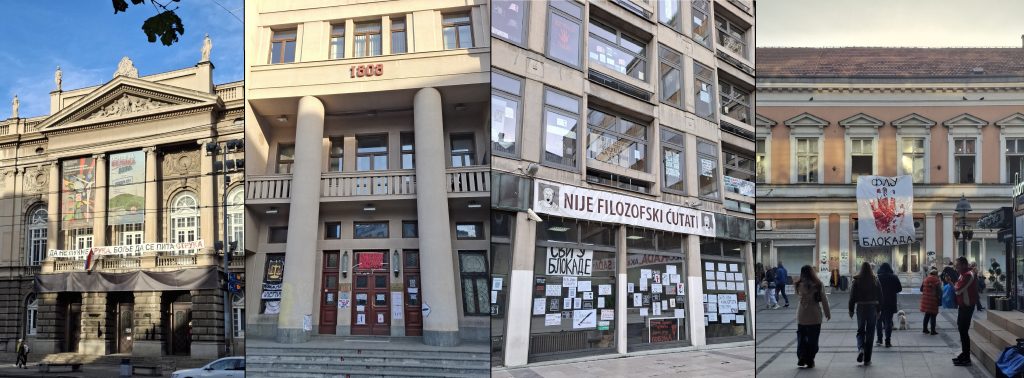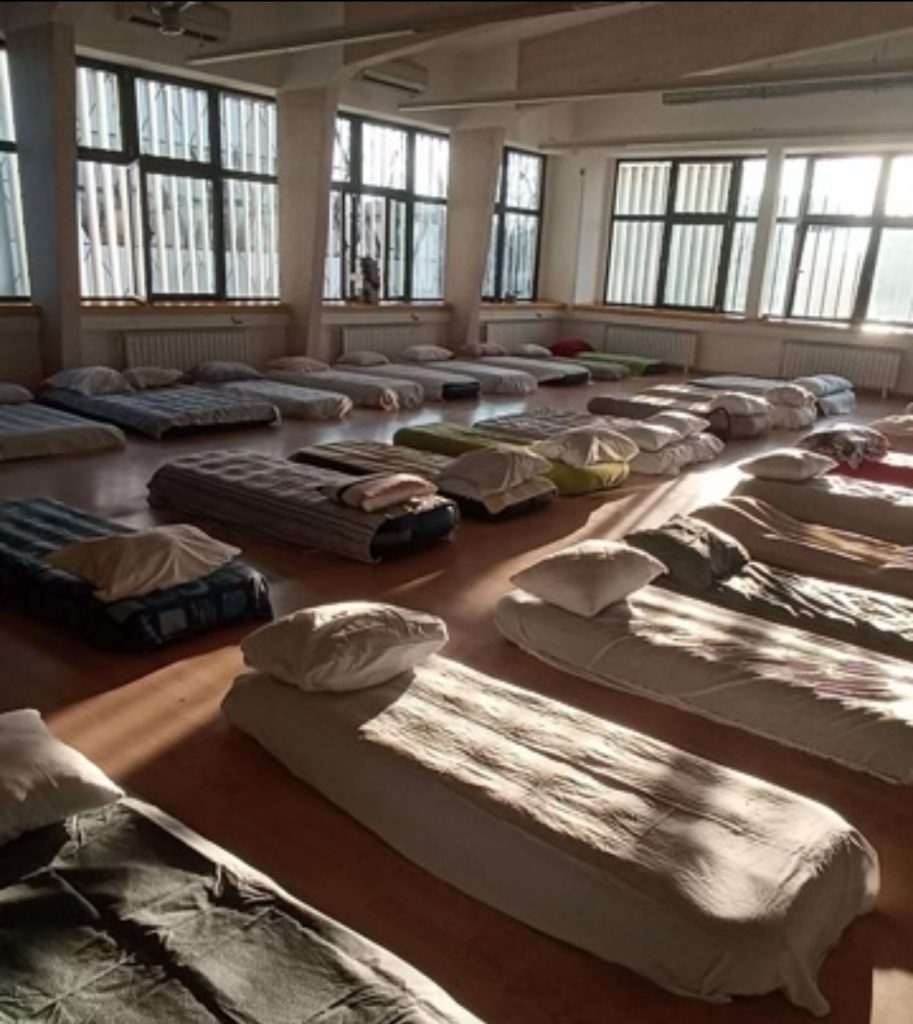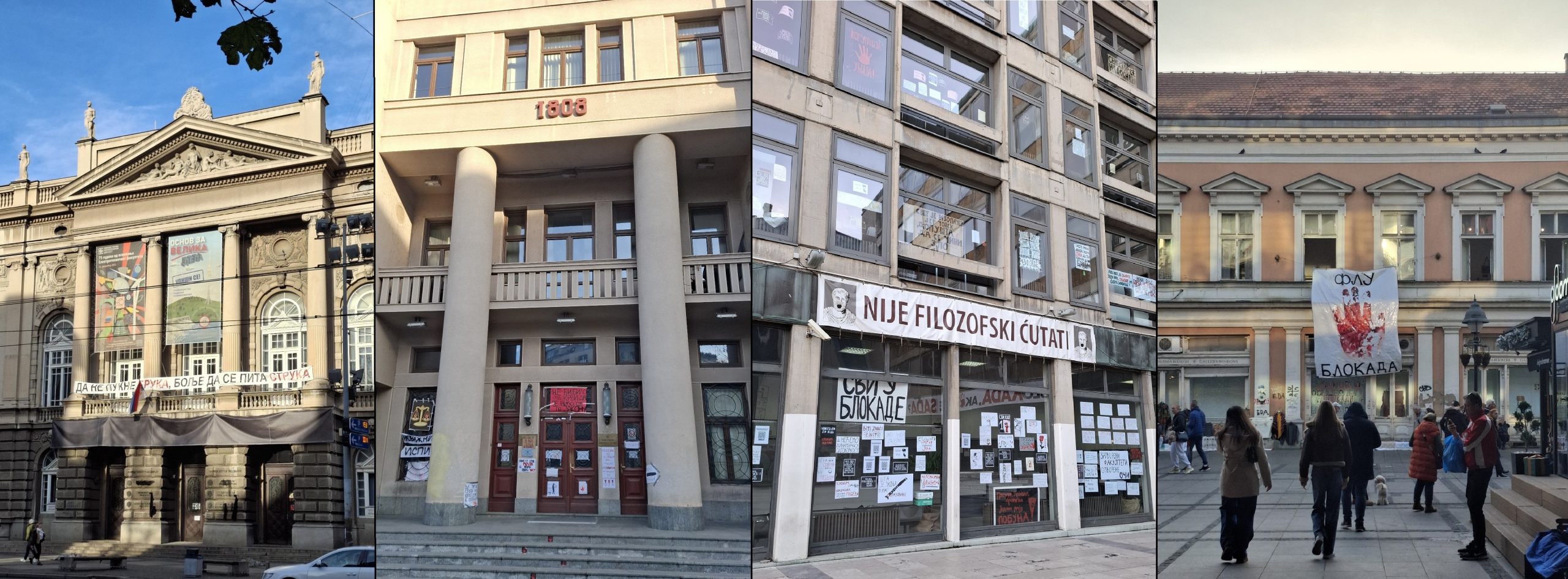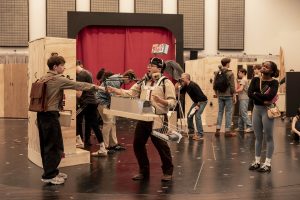
On Nov. 1, 2024, the concrete canopy of Novi Sad, Serbia’s biggest train station, collapsed, resulting in the deaths of 15 people and 2 others injured in the process. The victims identified in the rubble and debris included a 16-year-old, a 17-year-old, a 10-year-old, and a 6-year-old as well as two adults between the ages of 58 and 76. The collapse of the concrete canopy claimed the lives of innocent Serbian citizens engaging in their routine commute to work and school and effectively propelled momentum into a movement dedicated to uncovering and dismantling decades of systematic corruption, theft, and political abuse.
The original train station in Novi Sad was built in 1882 and opened its doors on March 5, 1883, with the first train arriving around 6:30 p.m. Connecting Novi Sad to other cities in Serbia such as Nis and the nation’s capital, Belgrade, the train station would soon link Novi Sad with other major cities in Europe including Vienna, Hungary, Istanbul, and Paris. The beginning of the 20th century witnessed the once productive train station lose relevance as more modern technology became more widespread, and by 1960, a new, more modern train station was underway.
The new train station, known as Zeleznicka Stanica, opened on May 31, 1964. Throughout the 20th century, the station once again propelled the nation, increasing tourism not only to other nations but also bringing tourists to the eclectic city of Novi Sad. Minimal renovations would continue until the 2020s. These renovations were done by The China Railway Internation Co., in part of the Budapest-Railway expansion project. Renovations continued from 2021 to 2024, with the final reconstruction of the railways station building completed on July 5, 2024. The ceremonious re-opening was held on the same day, attended by City officials including Novi Sad mayor Milan Đurić, Serbian minister of construction, transport and infrastructure, Goran Vesić, and the Vojvodina president of the government, Maja Gojković.
Only four months after the second re-opening of the station, disaster struck as 15 people were found dead, and city streets across the nation filled with passionate protestors advocating for their justice. The series of demonstrations and protests began as a student-led protest, with university students demanding accountability from political leaders such as Đurić and Vesić. What began as a rallying cry from Serbia’s youth transformed into a historical movement, with citizens of all ages and backgrounds adding on to the narrative that there needs to be increased transparency and accountability within Serbia’s government. Citizen complaints regarding the government’s decisions has been an ongoing issue in Serbia, with the collapse of the train station symbolizing the end of ignored demands.

A 2016 Balkan Insight article, featuring insights from economic analyst Milan Culibrk and published during Aleksandar Vučić’s presidential campaign, noted that “people care more about living standard and jobs, but the campaign is dominated by other topics like NATO, Kosovo and the EU.” Additionally, out of “all the countries in Central and Eastern Europe, only Serbia, Croatia and Slovenia have a smaller GDP today than in 2008.”
Marking 100 days following the collapse of Zeleznicka Stanica, protestors blocked a major highway and bridge in the nation’s capital, Belgrade, for seven hours. In addition, demonstrators participated in an 80 km, or approximately a 50-mile, march from Belgrade to Novi Sad, emphasizing the solidarity between students regardless of what city they reside in.
“Students, at least here in Serbia, are the most influential part of society for multiple reasons. These young people are studying and working on being the future of our country. Students are standing up, and when students stand up, so do the people who support the youth in the fight for a better future,” said an anonymous student from Sabec, Serbia.
“The creative aspect of the protests is remarkable because it embodies a youthful spirit. Students have created different ‘hot spots’ during the occupation of bridges and streets. There are improvised basketball fields, open kitchens where people are seen cooking and eating together, chess games, singing choirs, and crews shooting on camera,” the student continued.
Since the protests have begun, Serbia’s Prime Minister, Miloš Vučević, and Novi Sad’s mayor, Milan Đurić, have both resigned on January 28.








Comments are closed.